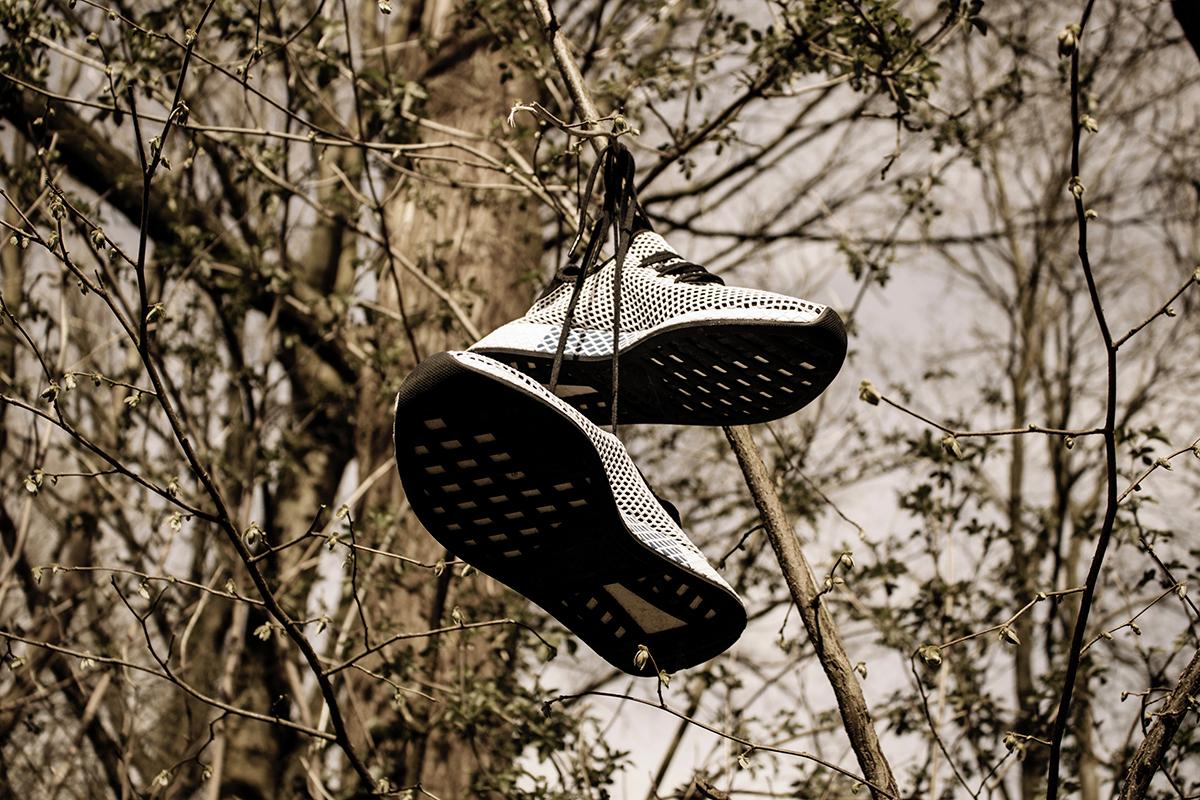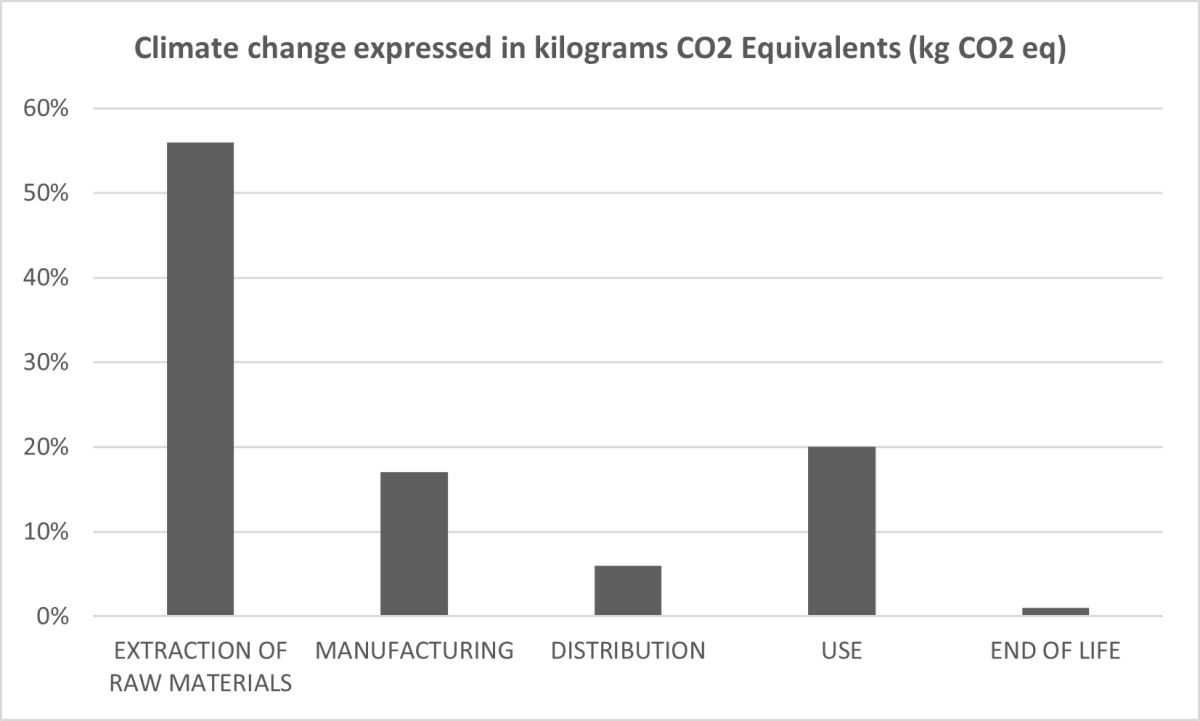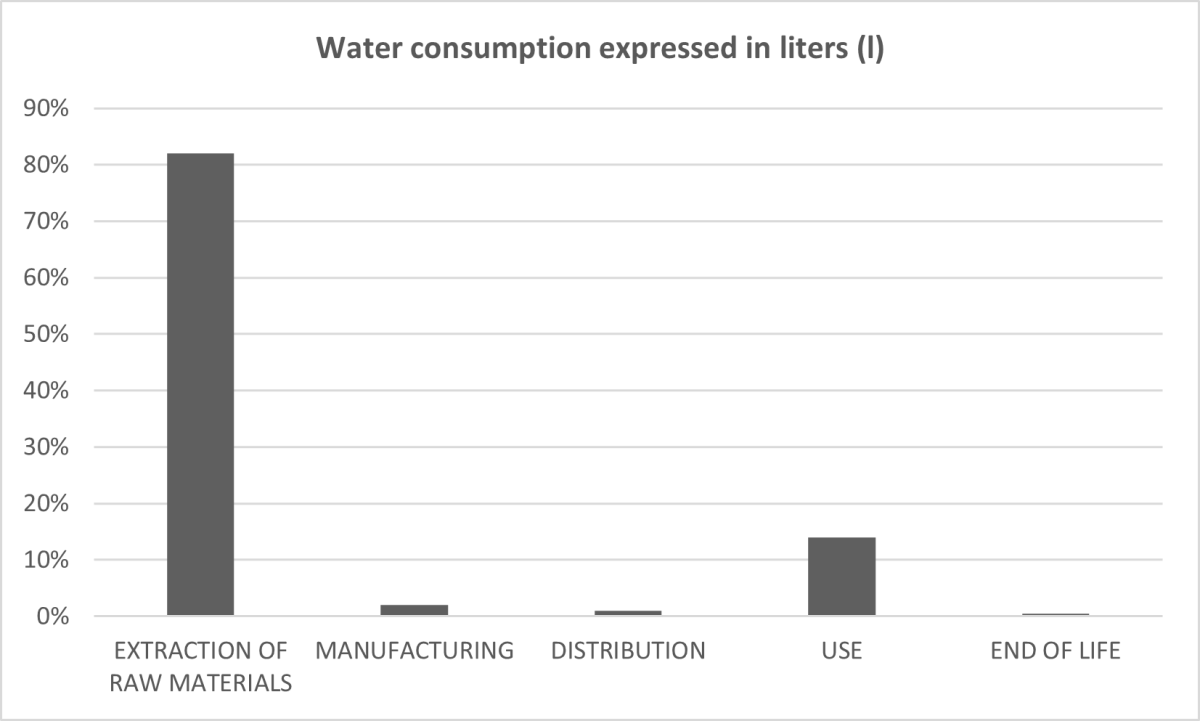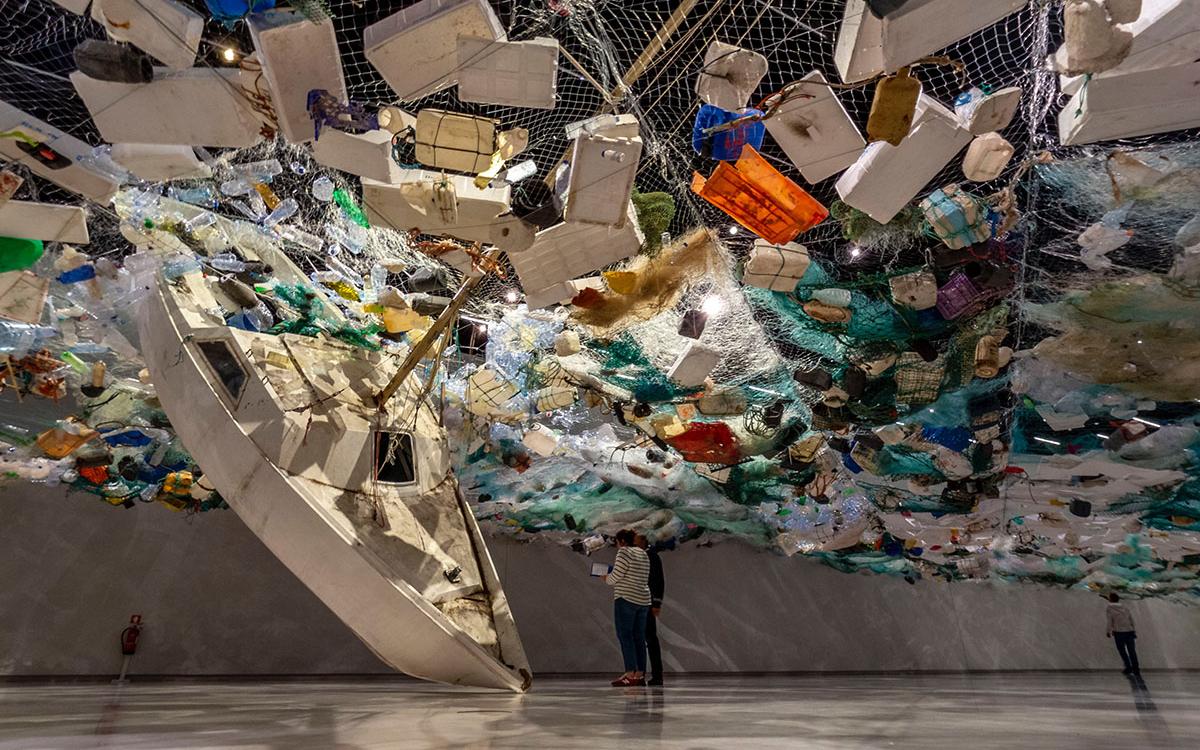- What's a life cycle analysis?
- Analysis of a tee-shirt
- Analysis of a pair of jeans
- Analysis of a sheet
- Analysis of a pair of sports shoe
A life cycle analysis (LCA) is a technique used to assess the potential environmental impacts associated with a product system. The notion of "product system" means that this analysis does not aim to assess the environmental impact of a product but of the service it renders; it's the functional unit. For example, a life cycle analysis does not aim to study the impact of a cotton tee-shirt but the impact of a cotton tee-shirt which is worn 50 times over one year.
A life cycle analysis involves several stages. It is firstly necessary to define the scope of the study (the functional unit and limits of the system). The various stages of the product life cycle must then be set out (extraction of raw materials, production, transport, use and end-of-life) as well as the inputs and outputs at every stage in order to identify flows. Thanks to LCA software, the impacts are assessed at every stage of the life cycle. Lastly, a results analysis stage is essential in order to enable conclusions to be reached.
LCA tools:
The life cycle analysis can be used in several situations: to identify environmental stakes, to compare products, to credibly communicate on environmental performance (environmental labelling), to increase knowledge and lastly, to eco-design products.
The analysis examples proposed in this cheat sheet give an initial idea of the most significant impacts and therefore, of the life cycle stages which need to be focused on during an eco-design approach. N.b: in this cheat sheet, only climate change and water consumption impacts are presented. Nevertheless, a complete life cycle analysis assesses numerous impacts such as fresh water eutrophication, land use, toxicity,… In addition, the functional unit used by these analyses varies according to the product - it is therefore of no use to compare products.
Example of a life cycle analysis of a tee-shirt
Functional unit:cotton tee-shirt worn once in 24 hours.
According to the diagrams below, it's by far the production stage which has the biggest impact on climate change. With respect to water consumption, raw material extraction has the biggest impact..
The production and the extraction of raw materials are therefore the two stages of the life cycle which need to be focused on in order to reduce the environmental impact of a cotton tee-shirt.
Source : Environmental assessment of Swedish fashion consumption - Mistra Futur Fashion

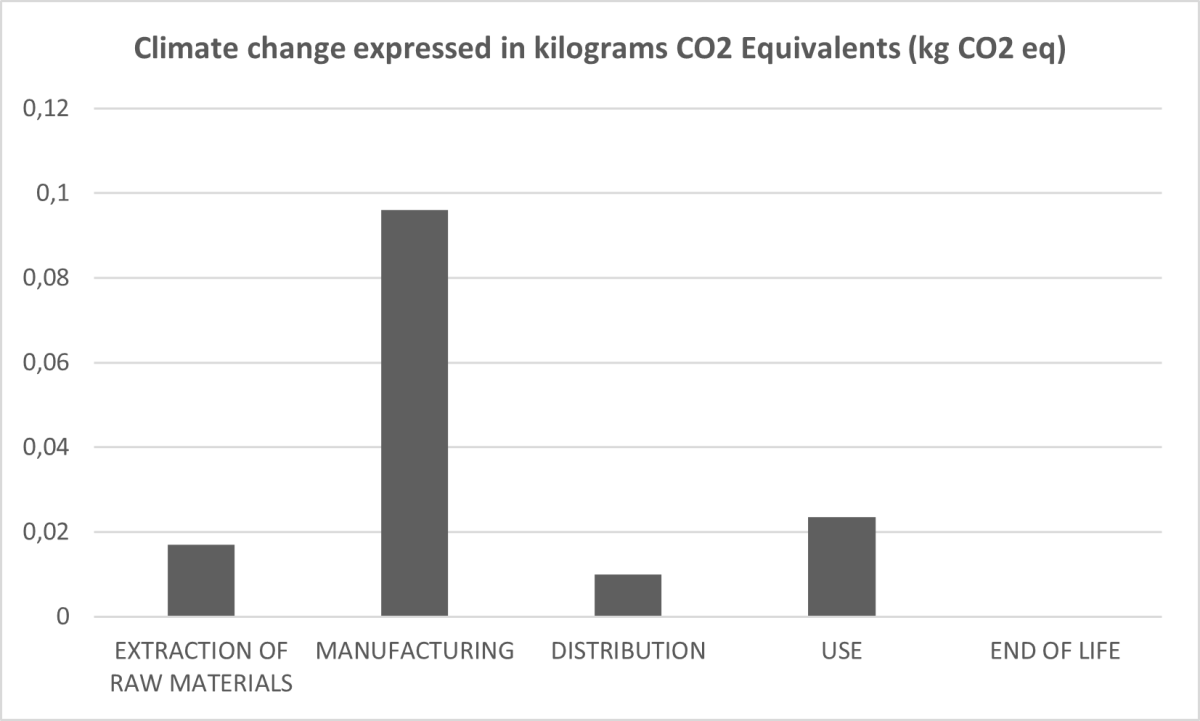
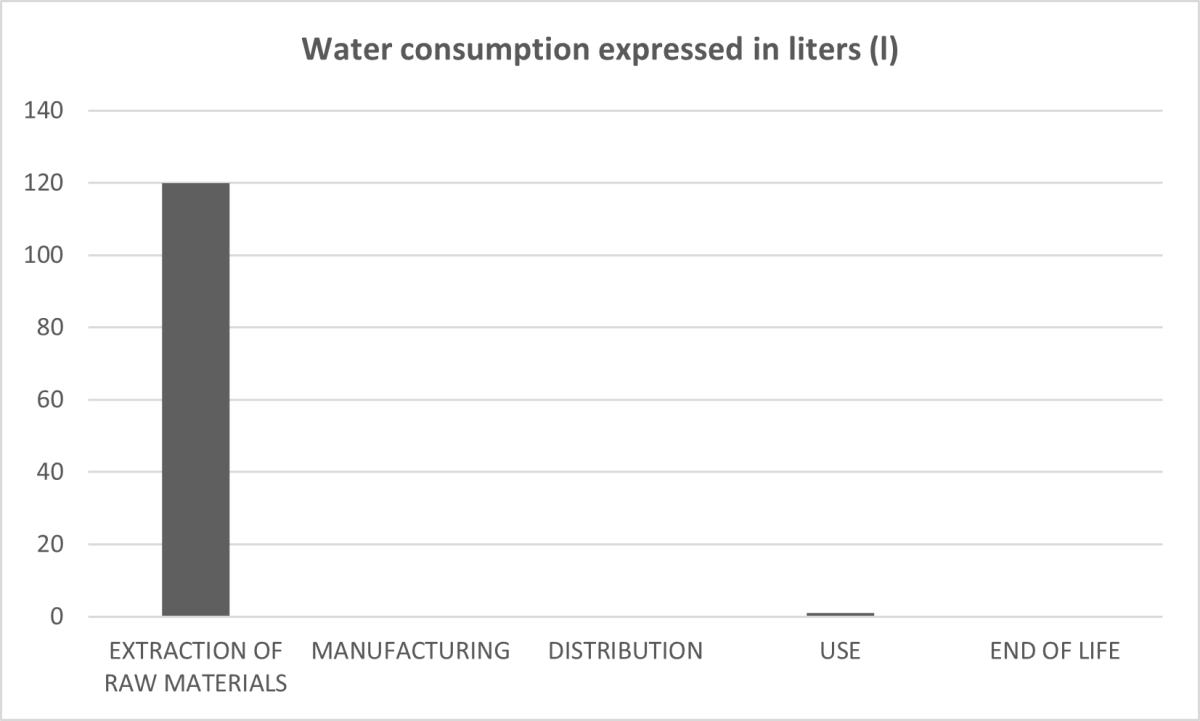
Example of a life cycle analysis of a pair of jeans
Functional unit:Pair of cotton jeans worn over 1 year.
According to the diagrams below, the production and use stages are the stages which have the biggest impacts on climate change. With respect to water consumption, raw material extraction has the biggest impact.
It is therefore these stages of the life cycle which need to be focused on in order to reduce the environmental impact of a pair of cotton jeans.
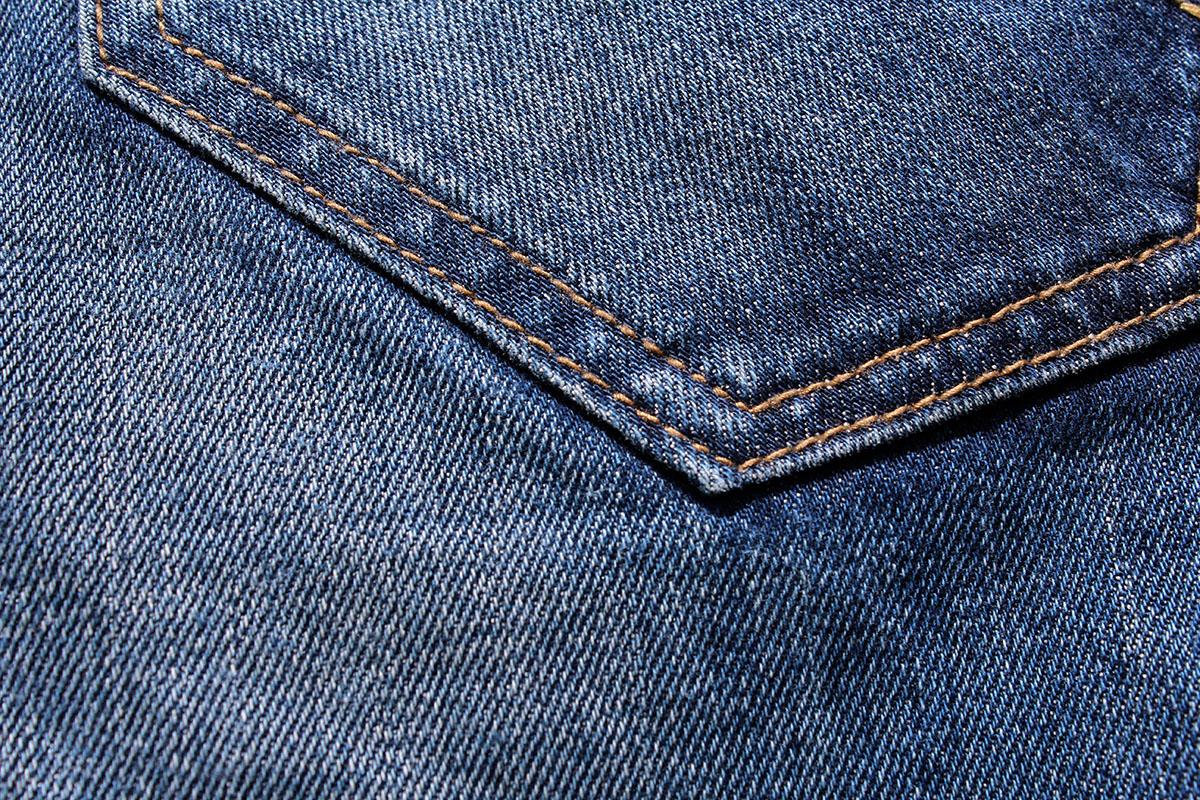
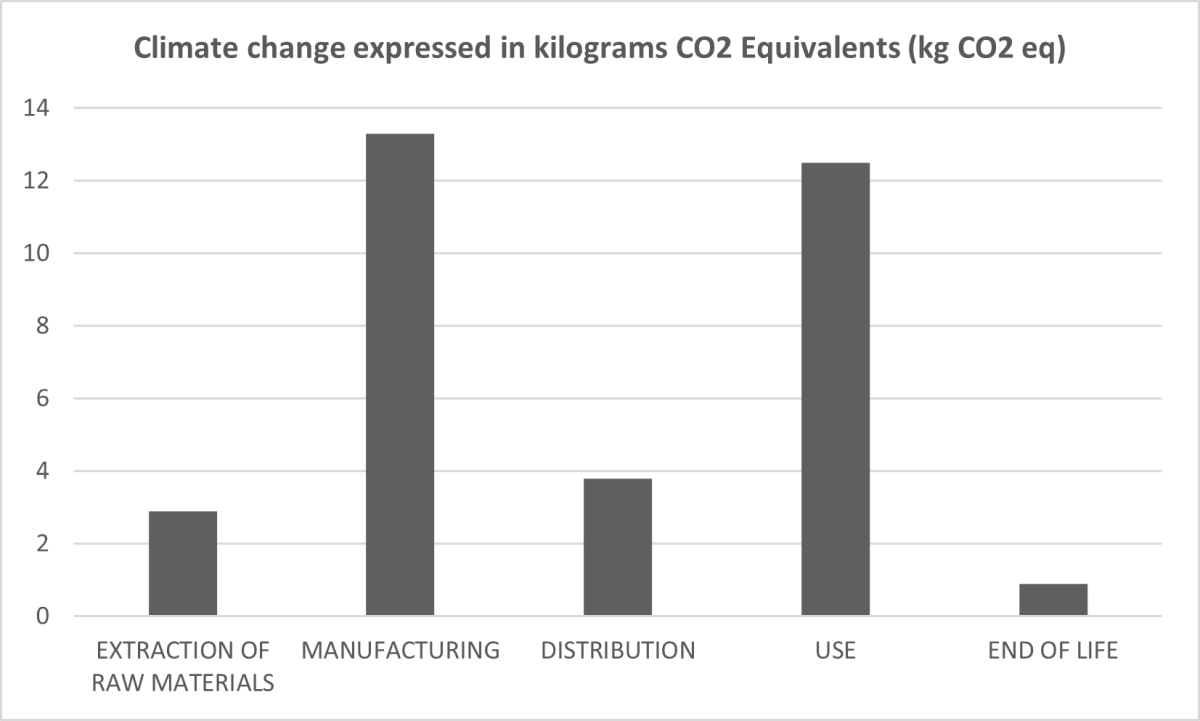
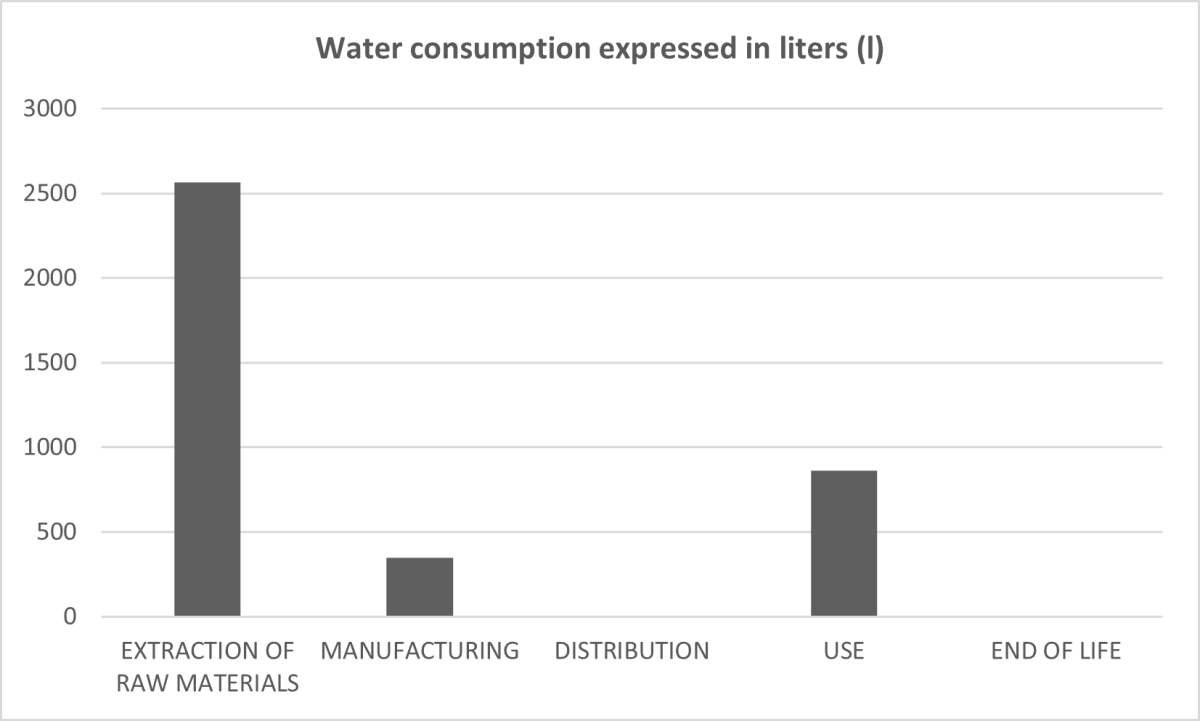
Example of a life cycle analysis of a sheet
Functional unit:Cotton sheet used 60 times over 1 year.
According to the diagrams below, the production stage has the biggest impact on climate change. With respect to water consumption raw material extraction, use and production have the biggest impact..
It is therefore these stages of the life cycle which need to be focused on in order to reduce the environmental impact of a cotton sheet.
Source : key elements of the LCA applied to textiles - LCA-tex
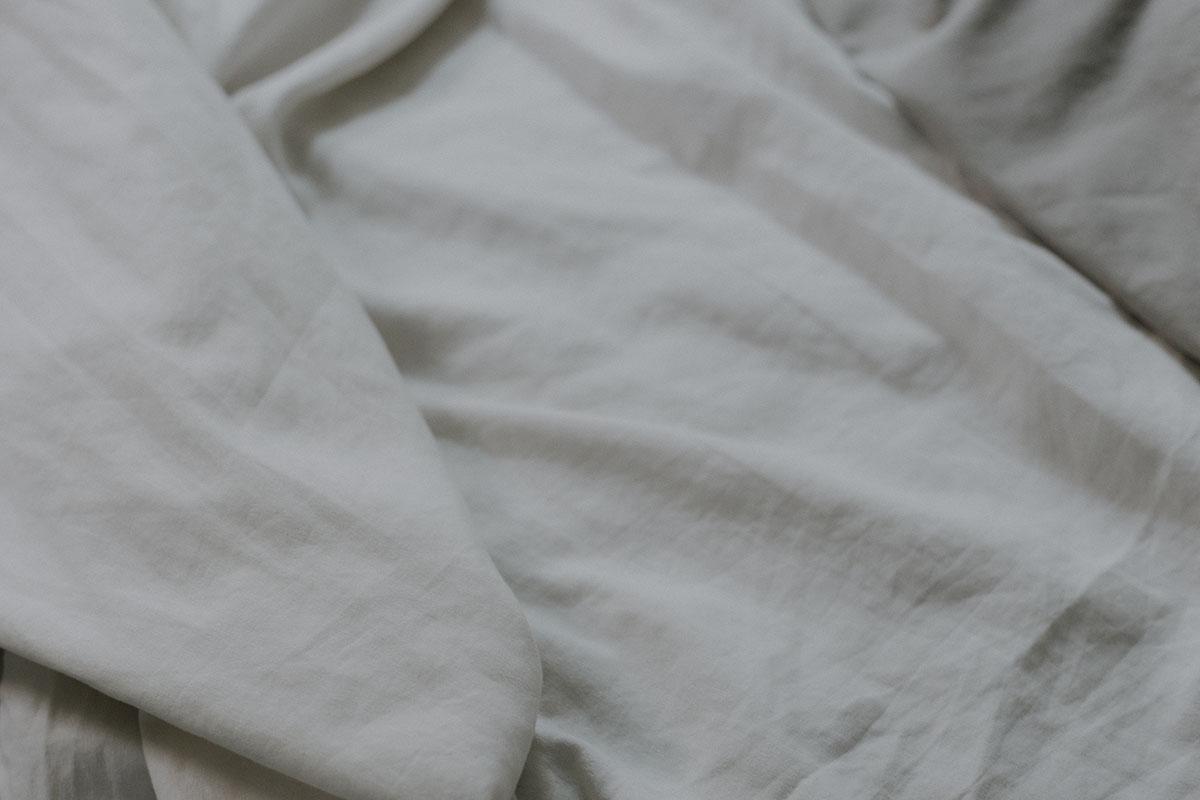
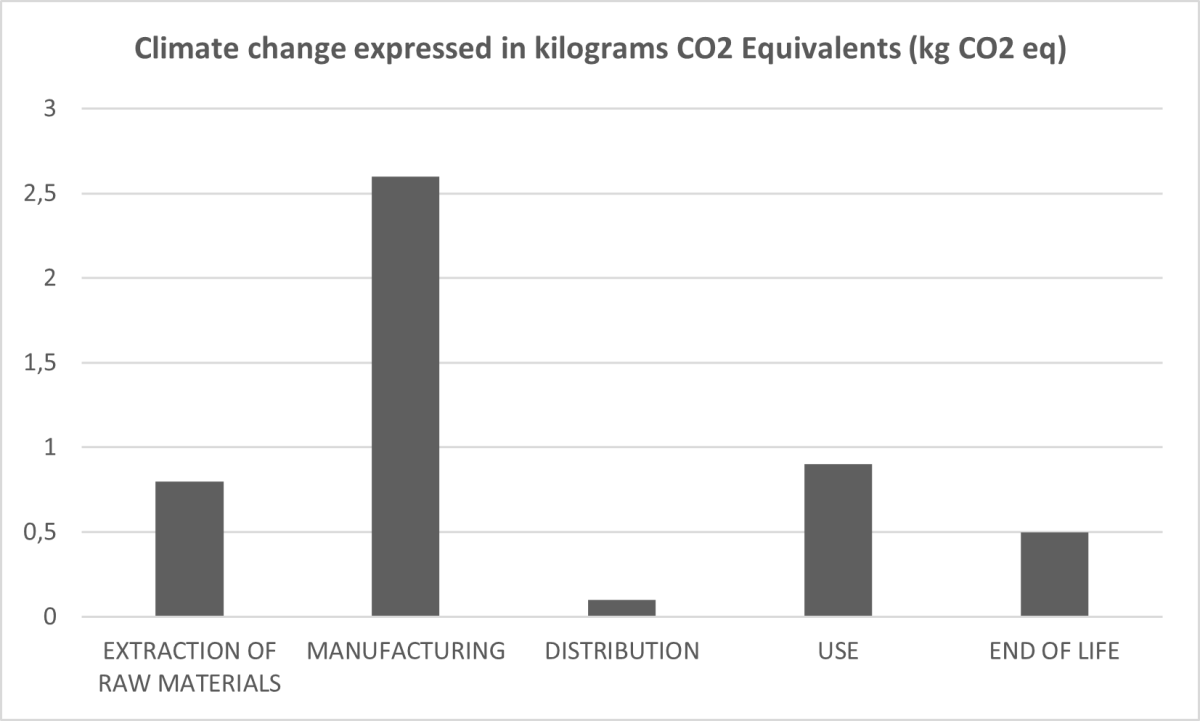
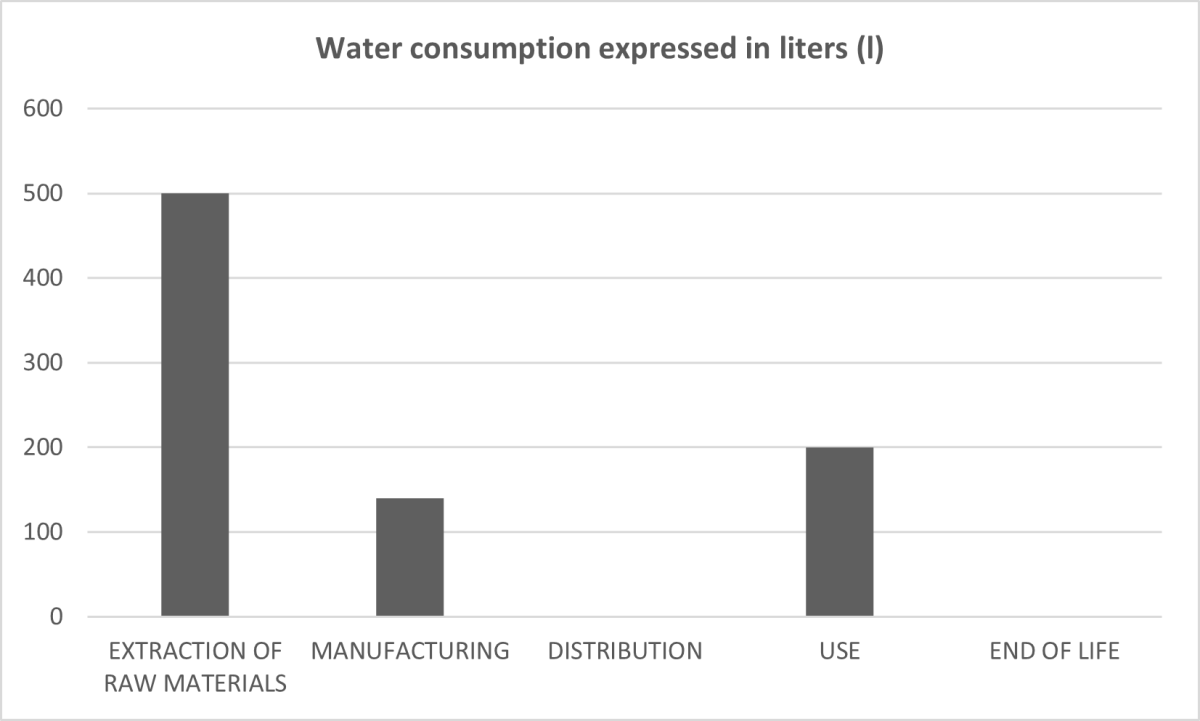
Example of a life cycle analysis of a pair of sports shoe
Functional unit:Sports shoe worn over 1 year.
According to the diagrams below, the raw materials extraction stage has the biggest impact on both climate change and water consumption.
It is therefore this stage of the life cycle which needs to be focused on in order to reduce the environmental impact of a pair of sports shoes.
